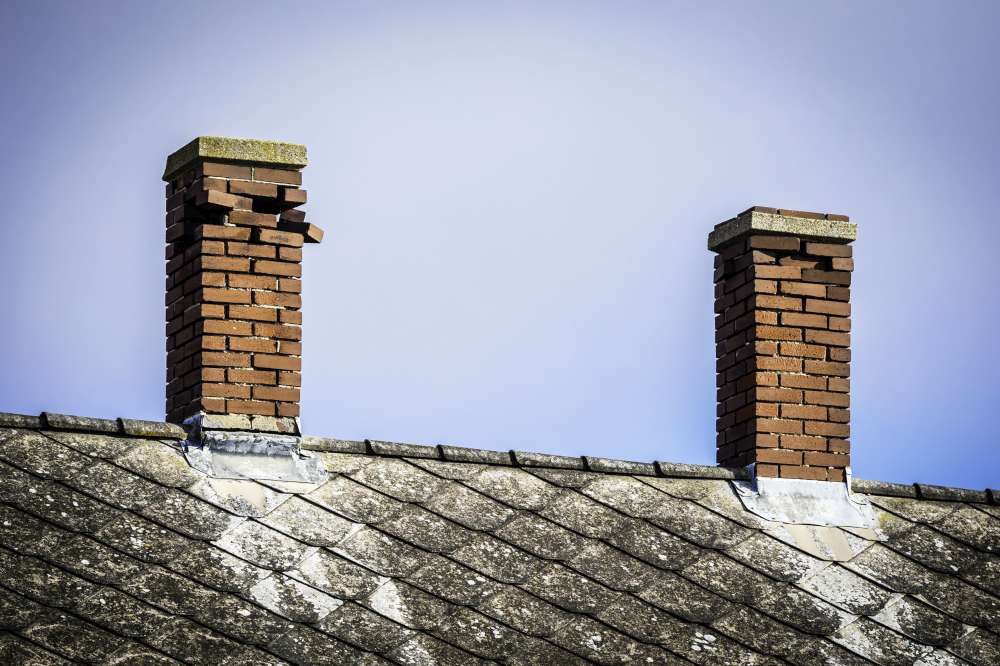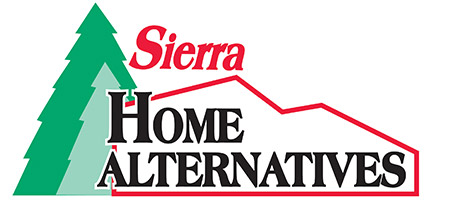This discussion comes up fairly frequently. It’s one of those questions that’s often answered by asking other questions during a conversation. If you have an older house with an open burning fireplace and a masonry chimney, you may have some options that are worth giving serious thought to.
THE QUICK ANSWER!
If you’re looking for a fast ‘yes’ or ‘no’, to the question . . . it’s: yes! Older masonry chimneys are often repaired, relined and rebuilt. There are many trustworthy chimney repair businesses’ around, but be sure to check with your WE LOVE FIRE dealer, first. Depending on the condition of the chimney, some of these projects can be quite extensive and may take several days to complete. You will want to make sure you’re doing business with a reputable firm.
CHIMNEY LINER OR FLUE.
When we talk about repairing a chimney, we really need to discuss the chimney flue or liner. Think of the exterior brick, block or stone that is seen from the ground. This ‘chimney’ acts as the housing or conduit for the chimney flue/liner. The function of a chimney flue is to simply route all the by-products of combustion out of the fireplace, stove or insert. This flue liner also needs to withstand very hot temperatures in order to protect the chimney walls and the integrity of the chimney structure.
Most older masonry chimney liners are built of ceramic clay tiles. These tiles are normally 24” in length. The lengths were connected with mortar at the time the chimney was originally built. However, both the mortar joints and the clay tiles can deteriorate over time because of the high flue temperatures and extreme weather conditions. Damaged or missing flue tiles can be an extremely dangerous situation if left unchecked. The National Fire Protection Association code (NFPA 211) states that every fireplace needs an approved and intact liner and must not have any cracks or holes.
OPTIONS FOR CLAY TILE FLUES.
Depending on the circumstances, there are a few possibilities that could be options to restore a masonry chimney flue liner.
If you plan to continue to burn wood in an open fireplace, removing the old tile liner and then installing a new cast-in-place liner may be your best bet. This process involves pulverizing the old clay tile into small pieces and physically removing it from the chimney. Based on the dimensions of the fireplace opening, a specific diameter form, (for example an 8” or 10” round form) is inserted into the chimney. Then, an insulated, mortar-like mix is poured around the form. The result is a perfectly sized, insulated liner for your fireplace that also improves the structural integrity of the chimney. Usually, there are loose bricks, maybe a new chimney crown or other exterior brick work that will need to be completed before this re-lining process can be started.
A stainless steel liner, that is a single wall stainless pipe, may be an alternative to pouring a new cast-in-place liner. If the plan is to install a wood burning insert into the fireplace opening, or position a wood burning stove on the hearth in front of the fireplace, this option would make the most sense. The stainless steel liner would be matched to the size of the flue collar on the insert or stove, normally 6”. The stainless liner can be a rigid pipe or a flexible pipe, or a combination of the two. It is often wrapped with a ceramic fiber insulation jacket to improve the performance of the appliance by preventing the liner from cooling off too quickly.
OTHER OPTIONS:
If you only plan to burn a couple of wood fires around the holidays with family and friends, or if you want to keep the original ‘look’ of the fireplace and chimney intact, consider the rebuild/cast-in-place liner option. However, if you want to use the fireplace on a regular basis and realize significant heat from the fuel that’s used, consider installing an insert. Fireplace inserts are designed for wood, gas, pellets or electricity.
WOOD BURNING INSERTS:
A wood burning insert is basically a modified wood burning stove, with-out legs or a base, that’s slid into the existing fireplace. Small, medium and large inserts are available, depending on the size of the old fireplace. A 6” stainless steel liner is installed up the existing chimney.
GAS INSERTS:
Gas inserts, LP or natural, come in several sizes, too. Electrical and gas supply lines will need to be installed into the fireplace. These can often be routed from the basement into the clean-out cavity in the basement and up through the floor of the firebox. Two, 3” or two, 4” aluminum vents are installed up the existing chimney to properly vent the gas insert. This is a very popular option. The convenience of gas speaks for itself.
Incidentally, this is also a good option if your chimney has deteriorated to the point where it’s a liability or simply not worth rebuilding. If the chimney can be torn down below the roofline, the two vent pipes for a gas insert can be combined to one, co-axial pipe. This co-ax pipe can be installed through the roof and flashed, thereby eliminating the need for the brick chimney above the roof. (Keep in mind, if there is a second or third flue in the chimney that is still in service for a water heater or maybe another fireplace, removing the chimney below the roofline will not be possible.)

HOW ABOUT PELLETS OR AN ELECTRIC INSERT?
Pellet inserts will need an electric source to operate. A single 3” or 4” stainless steel pipe is installed up the existing chimney to properly vent it. If the chimney is in poor condition above the roof, the process described above for the gas venting would be an option for a pellet insert vent pipe, too.
An electric fireplace insert will provide instant atmosphere and moderate heat. Since no venting is necessary with an electric insert, the chimney of the old fireplace could be repaired if needed, torn down below the roof-line or sealed up.
FACTORY BUILT WOOD BURNING FIREPLACES:
If yours is a zero-clearance, factory built fireplace, the chimney will be an air-cooled, stainless steel, three wall pipe or an insulated, two wall stainless steel pipe. These types of chimney pipe twist-lock together. So, if it’s damaged or in need of repair, you might be able to replace a length or two of it, but more than likely you’ll need to replace the entire system.
WHAT’S NEXT?
If you’re seeing problems with the exterior of the chimney, and since chimney’s deteriorate from the inside, out . . . you can safely assume that the flue liner is going to need some attention. If this is the case, your next step should be to contact your WE LOVE FIRE dealer and have your chimney professionally evaluated. You have options and we’re happy to explain them to you.













0 Responses